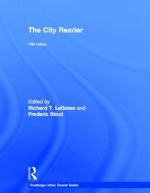
|
| Name: _________________________ | Period: ___________________ |
This quiz consists of 5 multiple choice and 5 short answer questions through Part II: Perspectives on Urban Form and Design.
Multiple Choice Questions
1. What author excerpted in The City Reader is recognized as an expert in the social science discipline of history, according to "How to Study Cities"?
(a) Michael Porter.
(b) Lewis Mumford.
(c) Kenneth Jackson.
(d) Frederic Stout.
2. The editors write in the Introduction from the Editors that their students have asked for the past how many years what the best writings in urban development are?
(a) 28.
(b) 35.
(c) 37.
(d) 42.
3. Richard LeGates points out that colleges and universities today have a tendency to do what to knowledge, according to "How to Study Cities"?
(a) Compartmentalize.
(b) Cheapen.
(c) Trivialize.
(d) Over analyze.
4. What periodical first published "The Urban Revolution"?
(a) Forbes.
(b) Town Planning Review.
(c) The Wall Street Journal.
(d) The New York Times.
5. What kind of academic programs are referred to as those which bring the expertise of specialists from multiple disciplines together?
(a) Doctorate programs.
(b) Combidisciplinary programs.
(c) Megadisciplinary programs.
(d) Interdisciplinary programs.
Short Answer Questions
1. Engels describes the working-class districts and the public health consequences of these horrors where in "The Great Towns"?
2. When was "The Growth of the City: An Introduction to a Research Project" first published?
3. What kind of research does not necessarily look at numbers or statistical analysis?
4. When was the article "Levittown and America" first published?
5. Who is the second editor listed in the Introduction from the Editors?
|
This section contains 220 words (approx. 1 page at 300 words per page) |

|




